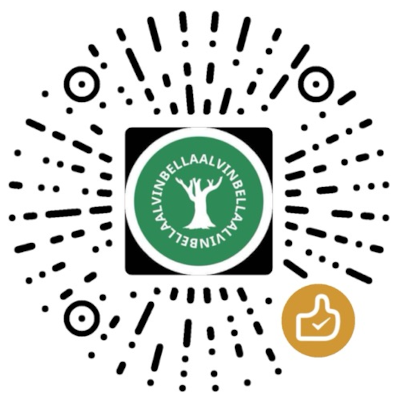Store

MariaDB
Overview
MariaDB is a free, open source relational database management system (RDBMS) created by Monty Widenius, one of the original developers of MySQL, as a fork of MySQL. MariaDB aims to maintain high compatibility with MySQL while providing higher performance, more features, and more open community governance. It supports SQL standards and is widely used in web applications, enterprise systems, and cloud deployments, suitable for small to large projects.
History and Development
- Origin:
- MariaDB was created in 2009 by Monty Widenius as a fork of MySQL due to concerns in the community about closed-source risks caused by Oracle's acquisition of MySQL (2008).
- The name comes from Monty's daughter Maria, symbolizing the continuation of the open source community.
- The design goal is to maintain MySQL compatibility while enhancing performance, features, and community transparency.
- Development History:
- 2009-2010: MariaDB 5.1 was released, based on MySQL 5.1, introducing the Aria storage engine and performance optimization.
- 2014-2018: MariaDB 10.0-10.3 introduced JSON support, Galera cluster (distributed database) and encryption functions.
- 2020-2025: MariaDB 10.11 (Long-term support version, until 2027) and 11.4 (June 2024) added system versioning tables (System Versioning), enhanced JSON and security features.
- Community and Support:
- Maintained by the MariaDB Foundation and the community, hosted on mariadb.org and GitHub.
- X post said "MariaDB is the open source successor to MySQL, with better performance."
- Provides enterprise support (MariaDB Corporation), SkySQL (cloud service), and Chinese documentation (mariadb.com/kb/zh-cn).
- Open source license:
- MariaDB server uses GNU GPL v2, requiring derivative works to be open source.
- Client libraries (such as Connector/C) use LGPL v2.1, allowing embedding in closed-source applications.
- Compared with SQLite (public domain, no restrictions) and PostgreSQL (similar to MIT, copyright notices must be retained), GPL is stricter.
Main features
MariaDB is known for its performance, compatibility, and scalability, and is suitable for web applications and enterprise scenarios. The following are its main features:
- MySQL compatibility
- Protocol and API:
- Highly compatible with MySQL 5.1-8.0, supporting MySQL clients, drivers, and tools.
- Storage engine:
- Support InnoDB (default, transaction support), Aria (crash recovery), MyISAM (high-performance read), etc.
- Provide Galera cluster, suitable for distributed systems.
- Protocol and API:
- Performance optimization
- Query optimization:
- Optimized query executor and index processing, faster than MySQL.
- X post said "MariaDB 10.11 performs well under high load".
- Thread pool:
- Support high concurrent connections, suitable for multi-user access.
- Query optimization:
- Advanced functions
- JSON support:
- Provide JSON functions (such as JSON_EXTRACT).
- System version table:
- Track data history, suitable for compliance audits.
- Encryption:
- Support tablespace encryption and transmission encryption (TLS) to protect data.
- Galera cluster:
- Multi-master replication, suitable for distributed deployment.
- JSON support:
- Cross-platform and tools
- Supported platforms:
- Support Linux, Windows, macOS.
- Management tools:
- MariaDB CLI: mysql command line to manage databases.
- phpMyAdmin: graphical interface, manage data.
- DBeaver: cross-platform GUI, supports MariaDB.
- Supported platforms:
- Community and Ecosystem
- Community: active community (mariadb.org/community), X and forums.
- Enterprise support: MariaDB provides SkySQL cloud services and commercial support.
Advantages and limitations
Advantages
- MySQL compatibility:
- Seamless replacement of MySQL, integrated with XAMPP.
- X post says "MariaDB is the best alternative to MySQL".
- High performance:
- Optimized query engine and thread pool, suitable for high-concurrency systems.
- Open source and free:
- GPL v2 license, free to use, active community.
- Feature-rich:
- JSON, encryption, Galera cluster, suitable for data management.
- Cross-platform:
- Supports multiple operating systems.
Limitations
- GPL license restrictions:
- Derivative works must be open source, which is stricter than SQLite (public domain) or PostgreSQL (similar to MIT).
- Solution: Use LGPL client libraries (such as Connector/C) to embed closed source projects.
- Complex configuration:
- Requires configuration of server processes (compared to SQLite's zero configuration).
- Solution: Use pre-configured MariaDB on XAMPP.
- Resource usage:
- Memory and disk usage are higher than SQLite (about 500MB vs 256KB).
- Solution: Run on high-performance devices.
- Comparison with SQLite/PostgreSQL:
- SQLite: zero configuration, lightweight, suitable for local development, but does not support high concurrency.
- PostgreSQL: more powerful (such as PostGIS), but complex configuration.
- MariaDB: balances performance and compatibility, suitable for XAMPP and production environments.
- Learning curve:
- You need to understand MySQL/MariaDB syntax and optimization.
Summary
MariaDB is an open source, MySQL-compatible relational database licensed under GPL v2. It is known for its high performance, JSON support, and encryption capabilities, and is suitable for web applications and enterprise scenarios. Compared with SQLite (lightweight, local development) and PostgreSQL (powerful, production environment), MariaDB balances performance and compatibility.



 DB Browser for SQLite
DB Browser for SQLite
 MongoDB
MongoDB
 PostgreSQL
PostgreSQL
 SQLite
SQLite
 XAMPP
XAMPP





